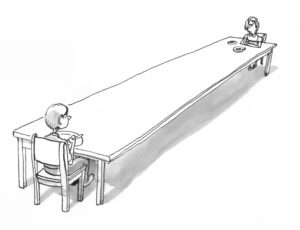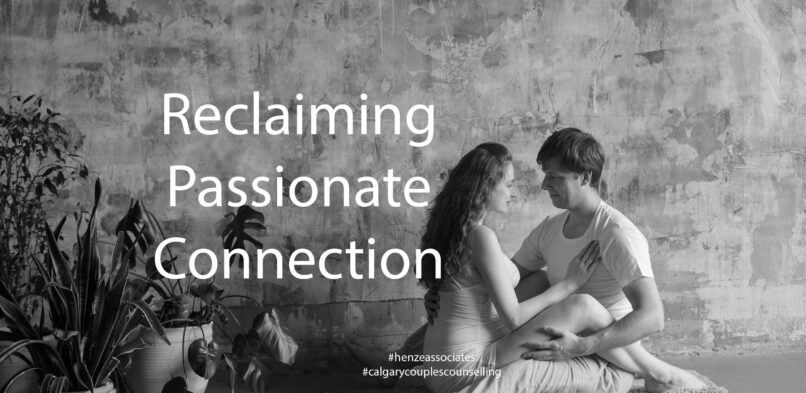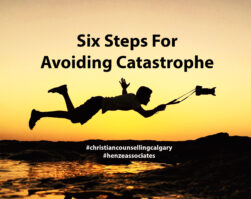Calgary Couples Counselling: There’s an enormous gap between public perception of what a marriage therapist does all day and what we actually do. In the mind of the general public, a Calgary Couples Counselling office is continually filled with cataclysmic problems: domestic violence, infidelity, addiction, sexual dysfunction, and other pathologies. While these are seen as our bread and butter, the reality is far more benign.
 The average marriage counsellor’s office is mostly filled with people whose marriages are quietly fading. They used to be good, used to be close, but then came the children, the career promotions, or some other life demand, and the couple simply stopped connecting. The talking slowed. Physical affection waned. Sex became robotic. Spirituality became perfunctory. The marriage continued, but mostly as a business arrangement.1 The vast majority of people seeking couples counselling in Calgary do so because they are done living that way. But, is there help?
The average marriage counsellor’s office is mostly filled with people whose marriages are quietly fading. They used to be good, used to be close, but then came the children, the career promotions, or some other life demand, and the couple simply stopped connecting. The talking slowed. Physical affection waned. Sex became robotic. Spirituality became perfunctory. The marriage continued, but mostly as a business arrangement.1 The vast majority of people seeking couples counselling in Calgary do so because they are done living that way. But, is there help?
Reclaiming Passionate Connection: How Seduction, Vulnerability, and Surrendered Intimacy Can Restore Your Relationship!
This slow emotional death so many marriages experience speaks to a deeper, ancient longing for connection. Our partners’ emotional availability has mattered to us for centuries. Saint Augustine, writing in the fourth century, spoke openly of his struggles with lust and longing. He is well recognized for his musings on men’s longings to be seen, heard and responded to by women, which he regarded as disordered echoes of our deepest longing for divine love, now played out imperfectly between men and women. He regarded our deep longings for affection as a taudry shadow of the soul’s true cry for wholeness through divine union.2 While deeply tainted by his personal shame, compulsive sexual behaviours and gender bias, Augustine articulated something we still grapple with: the fear of needing and not being received.3
Centuries later, Larry Crabb, one of the early voices in Christian counselling, echoed similar gendered thinking. In the late 1970s, Crabb began to teach that men were designed to move toward others with strength, initiative, and protection, while women were intended to invite connection and offer relational wisdom. Although free of much of Augustine’s contempt for our need for human relationships, Crabb still retained much of the religious guilt and gender bias Augustine held. He taught that relational dysfunction stemmed from flesh-based control strategies rather than Spirit-led responsiveness — a model saturated in sin-consciousness and entrenched gender stereotypes.45
 It was into this conceptual stream that, in the late 1990s, John and Julie Gottman introduced their research on bids for connection.6 Their work marked a decisive shift away from religious-guilt-based, gendered frameworks – one that built upon and expanded the value Crabb saw in relational connection and intimacy. They emphasized emotional reciprocity: that both partners must initiate and respond. A bid, they taught, is the fundamental unit of emotional connection: a gesture, comment, or touch that says, “Notice me. Connect with me.” It might be verbal (“Look at this!”), physical (a touch), or behavioral (simply moving over and making space to sit together).67
It was into this conceptual stream that, in the late 1990s, John and Julie Gottman introduced their research on bids for connection.6 Their work marked a decisive shift away from religious-guilt-based, gendered frameworks – one that built upon and expanded the value Crabb saw in relational connection and intimacy. They emphasized emotional reciprocity: that both partners must initiate and respond. A bid, they taught, is the fundamental unit of emotional connection: a gesture, comment, or touch that says, “Notice me. Connect with me.” It might be verbal (“Look at this!”), physical (a touch), or behavioral (simply moving over and making space to sit together).67
Gottman identified three typical responses to such bids: turning toward (positive engagement), turning away (ignoring), and turning against (responding with hostility or criticism).8 Their research showed that couples who regularly turn toward their partner’s bids report stronger intimacy and have an 86% lower divorce rate, whereas those who eventually separate only turn toward each other around 33% of the time.6
While statistically robust, this model did little to address the why behind failed bids, and sadly, their approach and language choices also did little to address the performance-based elements that were prevalent in this area. In practice, many of the people we’ve seen in our Calgary couples counselling centre internalize Gottman’s model as judgment: “I’m failing to love,” or worse, “You’re failing me.” The concept is frequently weaponized, used as a measuring stick or a means of guilt and control: “See? I reached out. You ignored me.” Much like Augustine and Larry Crabb’s sin-focused models, in Gottman’s model, turning away and turning against are typically viewed as negative responses to a partner’s bid for attention, and thus are often viewed as character flaws in the partner. The problem is, when you work with real couples, those behaviours are rarely articulated as outright rejections.
Trauma-Informed, Attachment-Based, Calgary Couples Counselling:
 This is where a trauma-informed, attachment-based lens becomes crucial. Research by Sue Johnson, John Bowlby, and Mario Mikulincer & Phillip Shaver suggests that turning away is rarely an outright rejection. Rather, it is a form of emotional unavailability which is often born from shame, fear, or learned helplessness. The person may deeply long for love, relationship and a securely attached intimate connection with their partner, but deep inside a little voice says: “I can’t do this. I’m going to get hurt.” In such moments, avoidance becomes a protective strategy against the struggles in attachment that underlie these responses and a means of guarding against anticipated disappointment.101112
This is where a trauma-informed, attachment-based lens becomes crucial. Research by Sue Johnson, John Bowlby, and Mario Mikulincer & Phillip Shaver suggests that turning away is rarely an outright rejection. Rather, it is a form of emotional unavailability which is often born from shame, fear, or learned helplessness. The person may deeply long for love, relationship and a securely attached intimate connection with their partner, but deep inside a little voice says: “I can’t do this. I’m going to get hurt.” In such moments, avoidance becomes a protective strategy against the struggles in attachment that underlie these responses and a means of guarding against anticipated disappointment.101112
Turning against, in a similar departure from Gottman, is best understood not as cruelty but as protest behavior.13 Gottman’s concept of “turning against” should actually be understood as a reaction against the trauma-based and insecure attachment-driven perception that the partner has already turned away. It is a desperate attempt to regain emotional control. As van der Kolk and Siegel argue, trauma survivors often respond to relational vulnerability with protective aggression: “If I push you away, you can’t abandon me.” Sarcasm, criticism, and shutdowns become a means of emotional self-defense.1415
These reactions are not character flaws and, contrary to Gottman’s messaging, these aren’t negative reactions. They’re actually an attempt to make the relationship work under some kind of perceived internal or external threat, and an expression of our fear that the deepest longings of our hearts are being ignored. They are dysregulated attempts to stay safe and preserve connection that deserve to be honoured and redirected, not condemned. Gottman’s model, while insightful, fails to articulate this trauma-based subtext and inadvertently contributes to shame cycles.1016 And more importantly, it comes off as dutiful, lifeless and devoid of passion.
Calgary Couples Counselling: Recreating the Dance of Seduction and Initiatory Pursuit.
 What all of us truly seek is not compliance, performance or some dry, tabulated scorecard of response. We are all led into relationship by our passions, and our hearts long for what might be called surrendered intimacy — a posture of mutual, unguarded availability. We long for a partner who says, “Your needs don’t scare me. They’re an invitation to love you better.” We hope that our partner will trust us with their need to survive and be loved, and manage the inevitable relational uncertainty through unguarded openness. We hope that love will triumph over fear and that our partners will respond with vulnerability, not withdrawal or aggression.
What all of us truly seek is not compliance, performance or some dry, tabulated scorecard of response. We are all led into relationship by our passions, and our hearts long for what might be called surrendered intimacy — a posture of mutual, unguarded availability. We long for a partner who says, “Your needs don’t scare me. They’re an invitation to love you better.” We hope that our partner will trust us with their need to survive and be loved, and manage the inevitable relational uncertainty through unguarded openness. We hope that love will triumph over fear and that our partners will respond with vulnerability, not withdrawal or aggression.
The best marriage counselling Calgary has to offer will always start by reawakening this connection. Couples often benefit from revisiting the early, hormone-soaked days of their relationship, back to the time when things were safe, when they looked at each other with starry-eyed wonder and bids were implicitly valid and enthusiastically met.6 This period is rich with what Esther Perel calls erotic intelligence — a state of mutual curiosity and playful engagement.17
Here we encounter two relational roles: seduction and pursuit. In popular discourse, seduction carries manipulative connotations. But in a healthy relationship, seduction is simply the art of inspiring desire.1817 It is rooted in emotional intelligence19, vulnerability, and charm. It involves selectively revealing something of the self and hoping it evokes interest. It is neither coercive nor accidental; it is a highly intentional invitation to connection.
But seduction alone is incomplete. For connection to deepen, it must be met with a corresponding movement of pursuit: a mutual stepping forward. This is what Reis & Shaver describe as reciprocal intimacy: equal emotional engagement that signals shared curiosity and mutual desire.20 It is a means of generating mutual consent through interpersonal interaction, awareness, and connection, a dance of attention and curiosity, creating emotional resonance through growing commonality.
Sadly, both Augustine’s and Crabb’s traditional gender based models of role relationship tend to feature the male in an initiatory role, while the woman is depicted as a largely passive responder to such. This is both false and harmful.21 In reality, seduction and pursuit occur in both partners, often unconsciously. While initiatory pursuit and seduction can occur in any order, seduction most commonly precedes pursuit for both partners, at least at an unconscious level.
Consider the poor success rates associated with a cold approach, such as when a man walks up to a stranger on the street and asks her out on a date. Yes, it may occasionally work, but it works despite an intense anxiety-related response in the person being approached. 17 When this narrative enters a relationship, it almost instantly cancels normal reciprocal relational movement and breeds resentment through disempowerment. And resentment is more often than not the reason those relationships are so flat and passionless.
Restoring passion and desire in a relationship isn’t about a bunch of check boxes, and it’s as much relational as it is a game of mental engagement and fantasy. It grows when we strengthen emotional intimacy, improve communication, and make space for new experiences. It demands quality time together, expressing genuine appreciation, and practicing vulnerability in relational interactions. Reintroducing physical affection, adding novelty through shared adventures and routines, and addressing unresolved issues, trauma and resentments are all crucial steps. Professional support, specialized sex and relationship therapy and a conscious effort to maintain individuality can all help to rekindle the romantic and erotic energy that initially brought the couple together. But again, all of that depends upon the dance of seduction and initiatory response.
A client earlier today gave me permission to use a statement he made that illustrates this perfectly:
“For years, there wasn’t even a response to my cold initiations, much less the preceding seduction I could move towards. It was like showing up to a party I wasn’t invited to. It’s been better for the last two years. For the last two years, I would show up, and at least I was offered a drink, but I want an invitation.”
 While we will settle for a positive response from our partners to our cold initiation, all of us long for so much more. We want an invitation, and we want our seductions to be acknowledged and pursued enthusiastically by our partners. When relational seduction is not reciprocated with matching initiative, resentment can fester. That resentment often marks the couples who arrive in therapy saying, “Our relationship is dead.” What they really mean is: “I want our dating life back.” They long for reciprocal seduction. For mirrored playfulness. For the spark, the desire, the intimacy that once felt effortless. “I want to be chosen. And I want to choose in return.”2223
While we will settle for a positive response from our partners to our cold initiation, all of us long for so much more. We want an invitation, and we want our seductions to be acknowledged and pursued enthusiastically by our partners. When relational seduction is not reciprocated with matching initiative, resentment can fester. That resentment often marks the couples who arrive in therapy saying, “Our relationship is dead.” What they really mean is: “I want our dating life back.” They long for reciprocal seduction. For mirrored playfulness. For the spark, the desire, the intimacy that once felt effortless. “I want to be chosen. And I want to choose in return.”2223
Whether it’s in a raw area like sexuality or some completely pedestrian aspect of a relationship like emotions or spirituality, each partner is literally or figuratively saying, “I want you to push me back against the wall, kiss me passionately, tear my clothes off, and take me.” “I invite you to transform our relationship from a duty into a living, mutual flow, a negotiation of deeply consensual desire that enhances connection, builds ever-deeper trust, and makes it clear that we are both fully engaged in the authorship of ever-deeper and empowered connection that celebrates the joy of a passion that will last a lifetime.”
Calgary Couples Counselling: You can reclaim the love you always wanted!
At Henze & Associates: Counselling and Care, this is what we do. We don’t just fix marriages enough that you can live with them; we bring marriages to life! It’s not enough to do the right things; the passion needs to come back, and hearts need to reunite. So, if you’re done with a flat and lifeless relationship, maybe it’s time to reach for something deeper. Something surrendered. Something alive.
Calgary Couples Counselling: References
-
Lebow, J., Chambers, A. L., Christensen, A., & Johnson, S. M. (2012). Research on the treatment of couple distress. Journal of Marital and Family Therapy, 38(1), 145–168. ↩
-
Augustine. (1998). Confessions (H. Chadwick, Trans.). Oxford University Press. (Original work ca. 400 CE). Overview ↩
-
Brown, P. (2000). Augustine of Hippo: A Biography (Rev. ed.). University of California Press. ↩
-
Crabb, L. J. (1977). Effective Biblical Counseling. Zondervan. ↩
-
Crabb, L. J. (1991). Inside Out. NavPress. ↩
-
Gottman, J. M., & Silver, N. (1999). The Seven Principles for Making Marriage Work. Harmony Books. Gottman Institute ↩ ↩ ↩ ↩
-
Gottman, J. M., & Gottman, J. S. (2015). 10 Principles for Doing Effective Couples Therapy. W. W. Norton. ↩
-
Gottman, J. M. (1994). What Predicts Divorce? The Relationship Between Marital Processes and Marital Outcomes. Lawrence Erlbaum Associates. ↩
-
Johnson, S. M. (2004). The Practice of Emotionally Focused Couple Therapy: Creating Connection (2nd ed.). Brunner-Routledge. ICEEFT ↩ ↩
-
Bowlby, J. (1988). A Secure Base: Parent-Child Attachment and Healthy Human Development. Basic Books. ↩
-
Mikulincer, M., & Shaver, P. R. (2007). Attachment in Adulthood: Structure, Dynamics, and Change. Guilford Press. ↩
-
Johnson, S. M., & Whiffen, V. E. (Eds.). (2003). Attachment Processes in Couple and Family Therapy. Guilford Press. ↩
-
van der Kolk, B. (2014). The Body Keeps the Score: Brain, Mind, and Body in the Healing of Trauma. Viking. Publisher ↩
-
Siegel, D. J. (2010). The Developing Mind: How Relationships and the Brain Interact to Shape Who We Are (2nd ed.). Guilford Press. ↩
-
Tatkin, S. (2011). Wired for Love: How Understanding Your Partner’s Brain Can Help You Defuse Conflict and Build a Secure Relationship. New Harbinger. ↩
-
Perel, E. (2006). Mating in Captivity: Unlocking Erotic Intelligence. HarperCollins. ↩ ↩ ↩
-
Schnarch, D. (1997). Passionate Marriage: Keeping Love and Intimacy Alive in Committed Relationships. Henry Holt. ↩
-
Goleman, D. (1995). Emotional Intelligence: Why It Can Matter More Than IQ. Bantam. ↩
-
Reis, H. T., & Shaver, P. (1988). Intimacy as an interpersonal process. In S. Duck (Ed.), Handbook of Personal Relationships (pp. 367–389). Wiley. ↩
-
Ruether, R. R. (1983). Sexism and God-Talk: Toward a Feminist Theology. Beacon Press. ↩
-
Gottman, J. M. (2011). The Science of Trust: Emotional Attunement for Couples. W. W. Norton. ↩
-
Greenberg, L. S., & Johnson, S. M. (1988). Emotionally Focused Therapy for Couples. Guilford Press. ↩
-
Sternberg, R. J. (1986). A triangular theory of love. Psychological Review, 93(2), 119–135. DOI ↩









